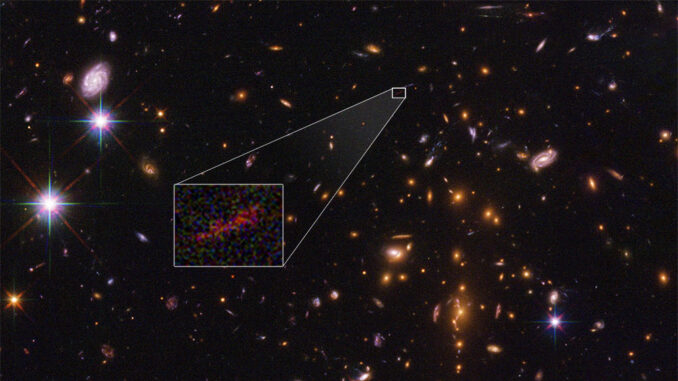
NASA’s James Webb Space Telescope has been withinside the information lately for the surprising new pics it has captured of big name formations. Now, the scientists analysing the telescope’s information consider that it has captured pics of the oldest galaxies withinside the universe.
According to a document through NASA, the 2 ability galaxies, named the GLASS-z11 and the GLASS-z13, are suspected to be over 33 billion mild years farfar from Earth. The observe detailing this information believes that those galaxies have been shaped at some stage in the primary three hundred million years of the universe’s existence.
To date, the best different galaxy showed to had been shaped so quickly after the huge bang is the GNz11, which changed into observed in 2015. The paper detailing the invention of GLASS-z11 and GLASS-z13 is but to be peer reviewed, and the observe is led through Rohan Naidu of the Harvard-Smithsonian Center for Astrophysics.
ISRO’s AstroSat discovers new big name formations
In a peer-assessment observe posted in Nature remaining week, a crew of Indian, American, and French astronomers led through Pune’s Inter-University Centre for Astronomy and Astrophysics has used information from ISRO’s AstroSat area telescope to pick out thirteen new big name formations at the threshold of the universe.
These big name formations had been determined on the threshold of the dwarf galaxies at the outer rim of the universe, and display symptoms and symptoms of drifting in the direction of the galaxies withinside the question, including to the latter’s mass and volume. This discovery is assumed to be giant due to the fact the developing mass makes it simpler for scientists to observe those notoriously faint early ‘blue compact dwarf’ (BCD) galaxies.
Launched through ISRO in 2015, the AstroSat observes remote items on the opposite give up of the electromagnetic spectrum as compared to the James Webb. NASA’s telescope in most cases research the universe in infrared wavelength, at the same time as AstroSat observes the universe the use of ultraviolet (UV), X-ray, and seen mild.

Leave a Reply